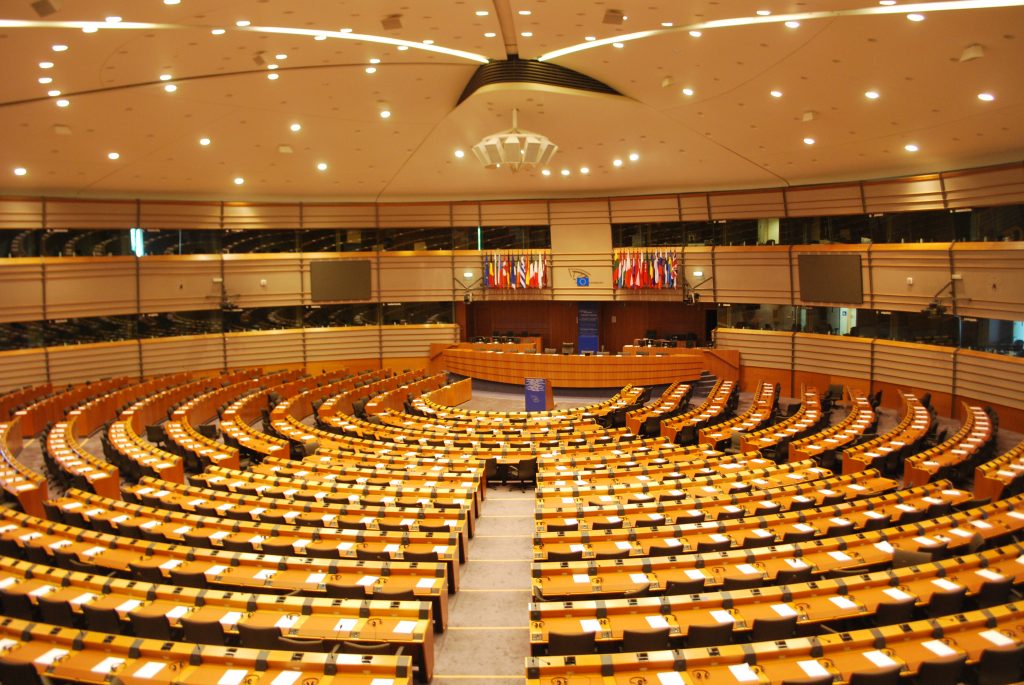 Regulation is important in any industry, as are standards which ensure that every player in the industry is delivering products and processes up to a certain quality and consistency. There’s a fine line, however, between healthy regulation and unnecessarily strict standards that stifle innovation. At the beginning of July, the European Parliament adopted a non-binding resolution entitled “Three-dimensional printing: intellectual property rights and civil liability,” with 631 votes in favor, 27 against and 19 abstentions.
Regulation is important in any industry, as are standards which ensure that every player in the industry is delivering products and processes up to a certain quality and consistency. There’s a fine line, however, between healthy regulation and unnecessarily strict standards that stifle innovation. At the beginning of July, the European Parliament adopted a non-binding resolution entitled “Three-dimensional printing: intellectual property rights and civil liability,” with 631 votes in favor, 27 against and 19 abstentions.
The resolution is largely a positive one in favor of 3D printing, pointing out the benefits of the technology for society and the economy and the need for new rules supporting faster certification of parts. That’s undoubtedly a good thing; one of the factors that holds up additive manufacturing from becoming a more prevalent production technology is the issue of getting bogged down in the part certification process. However, the resolution also calls for the European Commission to consider a revision of the Liability and Intellectual Property Rights (IPR) regulatory framework for 3D printing in the European Union.
The European Association of the Machine Tool Industries (CECIMO) has some concerns about this, believing that current EU regulations are enough and that further tightening intellectual property regulations would prevent the kind of innovation that is necessary for the 3D printing industry to continue to grow.
“3D printing technologies will thrive in Europe if, among other things, legislation continues to create supportive conditions,” CECIMO Director General Filip Geerts told 3DPrint.com. “Industry has been instrumental in pushing through solutions in the areas of digital rights management and data security. In this context, there is no need to establish new EU provisions on liability and Intellectual Property just for 3D printing at this stage, especially as there is no evidence of 3D printing being used as an easier or favoured production method for counterfeit goods.”
Panic about intellectual property violations are prevalent in the 3D printing industry, but many have argued that those fears are overblown. Individual designers who post their files online are at risk of having their designs stolen and sold elsewhere, but in cases where that has happened, crackdown on the offenders has generally been swift. Many are concerned about the theft of intellectual property from corporations, but there hasn’t been much evidence of that happening so far, and many preventative measures have been offered by experts on how to safeguard parts against being copied. CECIMO argues that regulations are already strict when it comes to 3D printing, and that a difference should be established between business-to-business (B2B) and business-to-consumer (B2C) uses of the technology when approaching regulation.
Liability is an issue discussed by the European Parliament as well, which was outlined initially in a preliminary report at the end of 2017. The question is who is responsible when someone is harmed by a 3D printed object – the manufacturer of the object itself, the manufacturer of the 3D printer, or the creator of the software used to design the object? The issue is a murky one, and again CECIMO argues that too much focus on liability is likely to slow down the necessary acceleration of 3D printing in Europe.
The adoption of the resolution requires a mandatory response from the European Commission within three months. The Commission has been asked to outline its views and intentions on the subject, and CECIMO intends to continue to work closely with the Commission to encourage that the current EU regulations be left alone.
Discuss this and other 3D printing topics at 3DPrintBoard.com or share your thoughts below.
[Images provided by CECIMO]


32 Replies to “CECIMO Raises Concerns: How Much is Too Much 3D Printing Regulation”
Comments are closed.